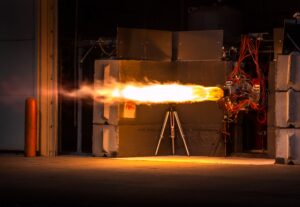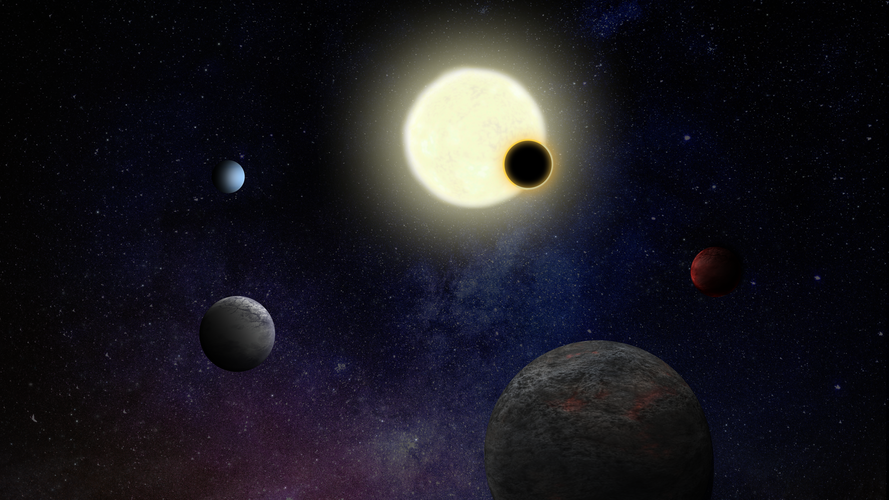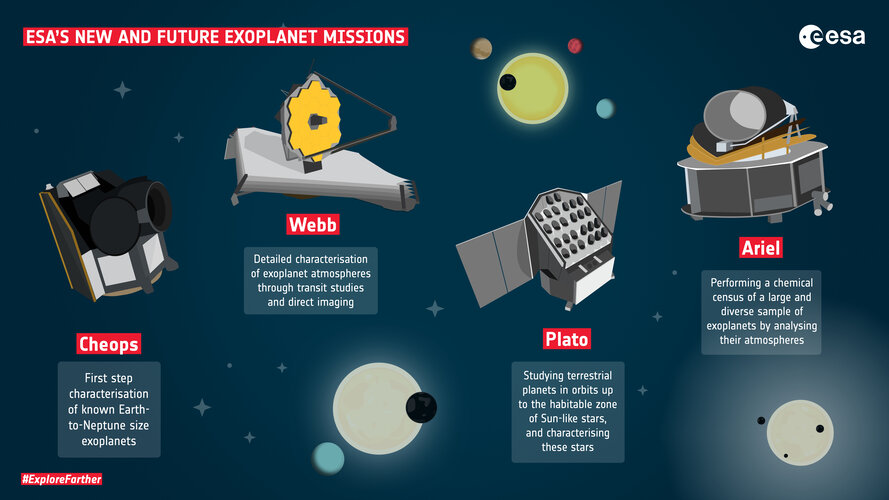Rocket engine supplier Ursa Major raises $85 million in new funding round
Tuesday, 07 December 2021 09:00
Ursa Major, a Colorado-based manufacturer of liquid engines for small space launchers and hypersonic vehicles, announced Dec. 7 it has closed an $85 million Series C fundraising round.
Japanese tycoon 'excited' ahead of trip to ISS
Tuesday, 07 December 2021 08:10
Japanese billionaire Yusaku Maezawa said Tuesday he was feeling "excited" ahead of his mission to the International Space Station, which marks Russia's return to space tourism.
Maezawa, a space enthusiast who made his wealth in online fashion, and his production assistant, Yozo Hirano, will spend 12 days on the ISS.
Their Soyuz rocket operated by Russia's Roscosmos space agency will blast off from the Moscow-leased Baikonur cosmodrome in Kazakhstan on Wednesday.
"I feel excited. I'm like an elementary student waiting for a school trip," Maezawa said at a press conference on the eve of the launch.
"I want to see the earth from space.
Airbus will build ESA’s Ariel exoplanet satellite
Tuesday, 07 December 2021 07:00
ESA and Airbus have signed a contract to move forward with the design and construction of the Atmospheric Remote-sensing Infrared Exoplanet Large-survey, Ariel, planned for launch in 2029.
ESA’s new and future exoplanet missions
Tuesday, 07 December 2021 07:00 Image:
ESA’s new and future exoplanet missions
Image:
ESA’s new and future exoplanet missions Exoplanet system artwork
Tuesday, 07 December 2021 07:00 Image:
Exoplanet system artwork
Image:
Exoplanet system artwork When variations in Earth's orbit drive biological evolution
Tuesday, 07 December 2021 06:10 Coccolithophores are microscopic algae that form tiny limestone plates, called coccoliths, around their single cells. The shape and size of coccoliths varies according to the species. After their death, coccolithophores sink to the bottom of the ocean and their coccoliths accumulate in sediments, which faithfully record the detailed evolution of these organisms over geological time.
A team
Coccolithophores are microscopic algae that form tiny limestone plates, called coccoliths, around their single cells. The shape and size of coccoliths varies according to the species. After their death, coccolithophores sink to the bottom of the ocean and their coccoliths accumulate in sediments, which faithfully record the detailed evolution of these organisms over geological time.
A team Autonomous passenger shuttle service trialled in Oxfordshire
Tuesday, 07 December 2021 06:10London, UK (SPX) Dec 01, 2021 A fully autonomous passenger shuttle service begins trials on UK roads today, Science Minister George Freeman has announced. The new service is being trialled by Darwin Innovation Group, with support from the European Space Agency (ESA) and the UK Space Agency. An autonomous shuttle will transport passengers around Harwell Science and Innovation Campus in Oxfordshire, which is home to some
A fully autonomous passenger shuttle service begins trials on UK roads today, Science Minister George Freeman has announced. The new service is being trialled by Darwin Innovation Group, with support from the European Space Agency (ESA) and the UK Space Agency. An autonomous shuttle will transport passengers around Harwell Science and Innovation Campus in Oxfordshire, which is home to some
NASA rocket to study mysterious area above the North Pole
Tuesday, 07 December 2021 06:10 Strange things happen in Earth's atmosphere at high latitudes. Around local noon, when the Sun is at its highest point, a funnel-shaped gap in our planet's magnetic field passes overhead. Earth's magnetic field shields us from the solar wind, the stream of charged particles spewing off the Sun. The gap in that field, called the polar cusp, allows the solar wind a direct line of access to Earth's
Strange things happen in Earth's atmosphere at high latitudes. Around local noon, when the Sun is at its highest point, a funnel-shaped gap in our planet's magnetic field passes overhead. Earth's magnetic field shields us from the solar wind, the stream of charged particles spewing off the Sun. The gap in that field, called the polar cusp, allows the solar wind a direct line of access to Earth's Space Force welcomes North Carolina A&T to the University Partnership Program
Tuesday, 07 December 2021 06:10 The U.S. Space Force added North Carolina Agricultural and Technical State University to its University Partnership Program during a virtual ceremony Dec. 1.
N.C. A&T Chancellor Harold L. Martin Sr. and Vice Chief of Space Operations Gen. David D. Thompson signed the memorandum of understanding from their respective locations on campus in East Greensboro, North Carolina and at the Pentagon
The U.S. Space Force added North Carolina Agricultural and Technical State University to its University Partnership Program during a virtual ceremony Dec. 1.
N.C. A&T Chancellor Harold L. Martin Sr. and Vice Chief of Space Operations Gen. David D. Thompson signed the memorandum of understanding from their respective locations on campus in East Greensboro, North Carolina and at the Pentagon Kymeta and OneWeb Partner to Develop Flat Panel User Terminal for LEO Network
Tuesday, 07 December 2021 06:10 Kymeta and OneWeb have announced a joint development agreement (JDA) to develop an innovative flat panel electronically steered user terminal that is compatible with the OneWeb network to support land fixed applications and leading the way to various mobility applications like land mobile, maritime, and other mobility needs of the future.
The Kymeta u8 flat panel antenna technology provide
Kymeta and OneWeb have announced a joint development agreement (JDA) to develop an innovative flat panel electronically steered user terminal that is compatible with the OneWeb network to support land fixed applications and leading the way to various mobility applications like land mobile, maritime, and other mobility needs of the future.
The Kymeta u8 flat panel antenna technology provide Satellites reveal Ethiopian elephants under threat
Tuesday, 07 December 2021 06:10 Tens of thousands of illegal human settlements pose a real threat to the continued existence of an endangered elephant population, according to satellite analysis of the Babile Elephant Sanctuary in eastern Ethiopia by University of Oxford researchers and the Born Free Foundation.
Researchers from Oxford's School of Geography and the Environment and Born Free found, in the 11 years to 2017
Tens of thousands of illegal human settlements pose a real threat to the continued existence of an endangered elephant population, according to satellite analysis of the Babile Elephant Sanctuary in eastern Ethiopia by University of Oxford researchers and the Born Free Foundation.
Researchers from Oxford's School of Geography and the Environment and Born Free found, in the 11 years to 2017 Quantum computers getting connected
Tuesday, 07 December 2021 06:10 A promising route towards larger quantum computers is to orchestrate multiple task-optimised smaller systems. To dynamically connect and entangle any two systems, photonic interference emerges as a powerful method, due to its compatibility with on-chip devices and long-distance propagation in quantum networks.
One of the main obstacles towards the commercialization of quantum photonics rem
A promising route towards larger quantum computers is to orchestrate multiple task-optimised smaller systems. To dynamically connect and entangle any two systems, photonic interference emerges as a powerful method, due to its compatibility with on-chip devices and long-distance propagation in quantum networks.
One of the main obstacles towards the commercialization of quantum photonics rem Geophysicists detect electron dance deep inside the Earth, with a Twist
Tuesday, 07 December 2021 06:10 Most are aware that electrons are negatively charged particles that surround the nucleus of atoms and whose behaviour governs chemical interactions. However, it is less commonly known that electrons come in two distinct kinds: spin-up and spin-down. And the tendency for pairing between up and down spin electrons, forming "dance partners" with one another, is one of the most important behaviours
Most are aware that electrons are negatively charged particles that surround the nucleus of atoms and whose behaviour governs chemical interactions. However, it is less commonly known that electrons come in two distinct kinds: spin-up and spin-down. And the tendency for pairing between up and down spin electrons, forming "dance partners" with one another, is one of the most important behaviours Combining two cognitive computing nano-elements into one
Tuesday, 07 December 2021 06:10 Researchers at Tohoku University and the University of Gothenburg have established a new spintronic technology for brain-inspired computing.
Their achievement was published in the journal Nature Materials on Nov. 29, 2021.
Sophisticated cognitive tasks, such as image and speech recognition, have seen recent breakthroughs thanks to deep learning. Even so, the human brain still execute
Researchers at Tohoku University and the University of Gothenburg have established a new spintronic technology for brain-inspired computing.
Their achievement was published in the journal Nature Materials on Nov. 29, 2021.
Sophisticated cognitive tasks, such as image and speech recognition, have seen recent breakthroughs thanks to deep learning. Even so, the human brain still execute Japanese duo prepare for first tourist flight to space station since 2009
Tuesday, 07 December 2021 02:16 Two Japanese businessmen plan to become the first paying tourists to visit the International Space Station since 2009 by rocketing into orbit from Kazakhstan on Wednesday.
Billionaire Yusaku Maezawa, who made his fortune in the fashion industry, booked seats for himself and his production assistant, Yozo Hirano, aboard a Russian Soyuz spacecraft through Virginia-based spacecraft broker
Two Japanese businessmen plan to become the first paying tourists to visit the International Space Station since 2009 by rocketing into orbit from Kazakhstan on Wednesday.
Billionaire Yusaku Maezawa, who made his fortune in the fashion industry, booked seats for himself and his production assistant, Yozo Hirano, aboard a Russian Soyuz spacecraft through Virginia-based spacecraft broker 